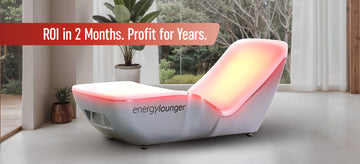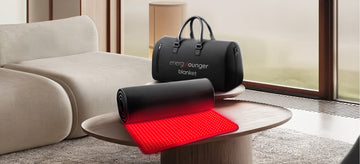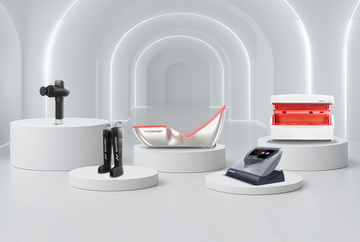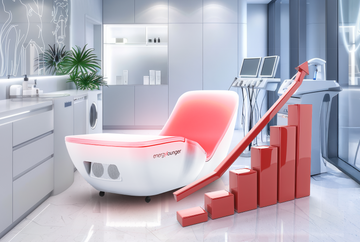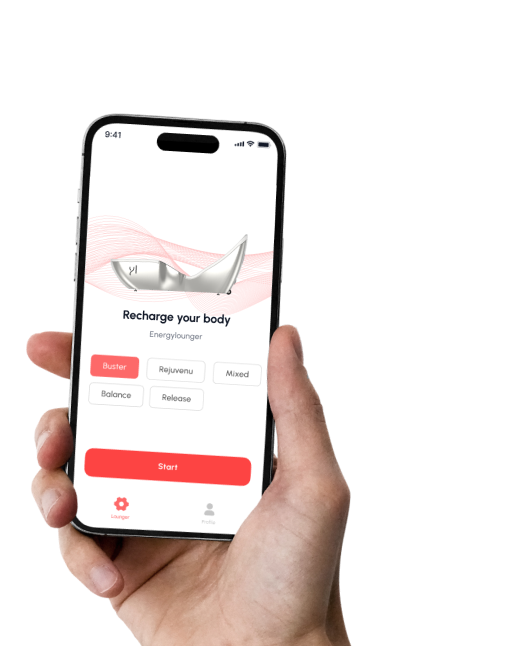The Psychology of Color: How Different Colors Affect Mood and Health
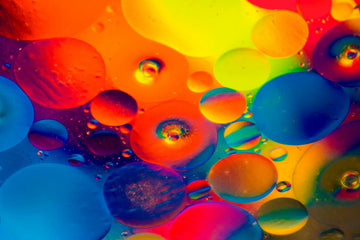
Color is a ubiquitous presence in our lives, influencing our perceptions, emotions, and even our physical well-being. From the soothing hues of a sunset to the energizing shades of a vibrant painting, color has the power to evoke profound psychological responses and shape our experiences of the world around us. The psychology of color is a fascinating field that explores the complex relationships between color, mood, and health, offering valuable insights into how we can harness the power of color to create more harmonious and supportive environments.
In this article, we will delve into the science behind color psychology, examining the ways in which different colors affect our emotional states, cognitive functioning, and physiological processes. By understanding the impact of color on our minds and bodies, we can make informed choices about how to utilize color in our personal and professional lives to promote well-being, creativity, and overall quality of life.
The Science of Color Perception

To understand the psychology of color, it is essential to first explore the science of color perception. Color is not an inherent property of objects themselves, but rather a subjective experience that arises from the interaction between light, the human eye, and the brain. When light strikes an object, some wavelengths are absorbed while others are reflected, and it is these reflected wavelengths that our eyes detect and interpret as color.
The human eye contains specialized receptors called cones, which are sensitive to different wavelengths of light. There are three types of cones, each attuned to a specific range of wavelengths corresponding to the colors blue, green, and red. The brain processes the signals from these cones, combining them to create the perception of various colors and shades. This process of color vision is known as trichromatic theory, and it forms the basis for our understanding of how we perceive and differentiate between colors.
In addition to the role of the eye and brain in color perception, research has also revealed that cultural, social, and personal factors can influence our responses to color. For example, certain colors may have specific associations or meanings within a given culture, such as the use of white for weddings in Western societies or the significance of red in Chinese culture. Personal experiences and preferences can also shape our emotional reactions to color, with certain hues evoking memories, feelings, or associations that are unique to each individual.
The science of color perception is a complex and multifaceted field that encompasses aspects of biology, psychology, and cultural studies. By understanding the underlying mechanisms of color vision and the various factors that influence our responses to color, we can gain a deeper appreciation for the powerful role that color plays in our lives and how we can utilize this knowledge to create more supportive and enriching environments.
The Psychological Effects of Color

The psychological effects of color are far-reaching and profound, influencing our emotions, thoughts, and behaviors in both subtle and overt ways. Different colors have been shown to evoke specific emotional responses, ranging from feelings of calm and relaxation to excitement and energy. By understanding the psychological impact of various colors, we can make informed choices about how to use color in our surroundings to promote desired moods and create supportive atmospheres.
One of the most well-known examples of the psychological impact of color is the use of blue in calming and relaxing environments. Blue is often associated with feelings of tranquility, serenity, and stability, making it a popular choice for bedrooms, healthcare settings, and other spaces where a sense of calm is desired. Research has shown that exposure to blue light can help to lower heart rate, reduce stress levels, and promote feelings of relaxation, making it a valuable tool for managing anxiety and promoting restfulness.
The color red has been the subject of much research and discussion in the field of color psychology. While some studies have associated red with feelings of excitement, passion, and urgency, it is important to note that the psychological effects of red can vary depending on the context and the specific wavelengths of red light being used. In the case of red light therapy, as utilized by EnergyLounger's innovative device, the specific wavelengths of red light (around 630nm) have been shown to have beneficial effects on skin health, collagen production, and overall well-being. This highlights the importance of considering the specific properties and applications of color when examining its psychological impact.
Green, the color most closely associated with nature, is often linked to feelings of balance, harmony, and growth. Exposure to green has been shown to promote relaxation, reduce stress, and improve mental clarity, making it a popular choice for office spaces, schools, and healthcare facilities. The calming effects of green are thought to stem from its association with natural environments, which have been shown to have restorative and stress-reducing properties.
Yellow, a bright and cheerful hue, is often associated with feelings of happiness, optimism, and creativity. This energizing color has been shown to stimulate mental activity, enhance concentration, and boost mood, making it a valuable tool for promoting productivity and innovation in work and educational settings. However, like red, overexposure to yellow can also lead to feelings of anxiety or agitation, underscoring the need for balance in color use.
The psychological effects of color extend beyond individual hues to encompass the interplay and harmony between different colors. The use of complementary colors, such as blue and orange or green and red, can create a sense of balance and visual interest, while monochromatic color schemes, featuring variations of a single hue, can evoke feelings of unity and cohesion. By understanding the psychological impact of color combinations and contrasts, designers and individuals can create spaces that are both aesthetically pleasing and emotionally resonant.
Ultimately, the psychological effects of color are a powerful tool for shaping our experiences and well-being. By mindfully incorporating color into our surroundings and daily lives, we can harness its potential to promote desired moods, enhance cognitive functioning, and support overall mental and emotional health. Whether in our homes, workplaces, or public spaces, the thoughtful use of color has the power to transform our experiences and enrich our lives in profound and meaningful ways.
Color and Physical Health

Beyond its psychological impact, color has also been shown to have significant effects on physical health and well-being. The therapeutic use of color, known as chromotherapy or color therapy, has a long history in traditional healing practices, with different colors being associated with specific physical and emotional benefits. While the scientific evidence for the efficacy of color therapy is limited, emerging research suggests that exposure to certain colors may indeed have measurable effects on physiological processes and health outcomes.
One area where the impact of color on physical health has been particularly well-studied is in the realm of red light therapy. As utilized by EnergyLounger's innovative device, red light therapy involves exposure to specific wavelengths of red light (around 630nm) and near-infrared light (850-950nm). Research has shown that these wavelengths can penetrate the skin and have beneficial effects on cellular function, collagen production, and overall skin health. Red light therapy has also been associated with improved muscle recovery, reduced joint pain, and enhanced relaxation and sleep quality. These findings highlight the potential of targeted color therapy in promoting physical well-being and addressing specific health concerns.
The use of color in healthcare settings has also garnered attention for its potential impact on patient outcomes and well-being. Studies have suggested that the strategic use of color in hospitals and clinics can help to reduce stress, improve mood, and promote healing. For example, the use of soothing, nature-inspired colors such as green and blue in patient rooms has been linked to reduced anxiety, improved pain management, and faster recovery times. Similarly, the use of warm, inviting colors in waiting areas and common spaces has been shown to promote feelings of comfort and support among patients and their families.
In addition to its direct effects on physiological processes, color may also impact physical health through its influence on behavior and lifestyle choices. For instance, the use of vibrant, energizing colors in fitness centers and recreational spaces may encourage physical activity and support healthy habits. Similarly, the use of calming, muted colors in dining areas may promote mindful eating and reduce the likelihood of overeating or making unhealthy food choices.
The relationship between color and physical health is a complex and multifaceted one, with many potential avenues for further research and exploration. While the precise mechanisms by which color influences physiological processes are not yet fully understood, the growing body of evidence suggests that the mindful use of color in our environments and daily lives may have significant implications for our overall health and well-being. By incorporating color in a way that supports our natural rhythms, promotes relaxation, and encourages healthy behaviors, we can harness its potential to create more nurturing and supportive spaces for ourselves and those around us.
Applying Color Psychology in Everyday Life

The principles of color psychology can be applied in various aspects of everyday life, from personal fashion choices to home decor and workplace design. By understanding the psychological and physiological effects of different colors, individuals can make informed choices about how to use color to enhance their well-being, productivity, and overall quality of life.
In personal fashion, color can be used to express individuality, evoke desired moods, and project confidence and authority. For example, wearing bold, vibrant colors like purple or blue can help to boost energy and confidence, making them popular choices for job interviews, presentations, or social events. Conversely, wearing softer, more muted colors like pastels or neutrals can promote a sense of calm and approachability, making them well-suited for more relaxed or intimate settings.
In home decor, color can be used to create a sense of harmony, reflect personal style, and promote desired atmospheres in different rooms. For instance, using cool, calming colors like blue or green in bedrooms can help to promote relaxation and restful sleep, while incorporating warm, energizing colors like yellow or orange in kitchens and dining areas can stimulate appetite and encourage social interaction. The strategic use of color in home decor can also help to create a sense of flow and unity between different spaces, enhancing the overall aesthetic and emotional impact of the living environment.
In the workplace, color can be a powerful tool for promoting productivity, creativity, and employee well-being. The use of muted, calming colors like blue or green in office spaces has been shown to reduce stress, improve focus, and support mental clarity, while the incorporation of vibrant, energizing accents like orange or yellow can help to stimulate innovation and collaboration. The thoughtful use of color in workplace design can also help to reinforce brand identity, reflect company values, and create a sense of community and shared purpose among employees.
For professionals in the wellness industry, such as those using EnergyLounger's cutting-edge light therapy device, color psychology can be a valuable tool for creating immersive and transformative experiences for clients. By incorporating color in a way that complements the therapeutic effects of red and near-infrared light therapy, wellness professionals can create a more holistic and engaging environment that supports relaxation, healing, and personal growth. Similarly, individuals using EnergyLounger device at home can harness the power of color to enhance the benefits of their light therapy sessions and create a more nurturing and supportive space for self-care and well-being.
When applying color psychology in everyday life, it is important to consider the unique needs, preferences, and cultural contexts of individuals and communities. What may be experienced as calming or energizing for one person may have a different effect on another, and the meanings and associations of colors can vary widely across different cultures and societies. By remaining attentive to these individual and cultural differences, and by using color in a way that is respectful, inclusive, and responsive to feedback, we can harness its potential to create more supportive, engaging, and meaningful environments for all.
The Future of Color Psychology

As our understanding of the psychological and physiological effects of color continues to grow, the field of color psychology is poised for exciting new developments and applications in the years to come. With the increasing availability of advanced color measurement and analysis tools, researchers are better equipped than ever to study the complex relationships between color, emotion, cognition, and health. This growing body of research is likely to inform new strategies for the use of color in a wide range of settings, from healthcare and education to marketing and entertainment.
One promising area for future exploration is the integration of color psychology with emerging technologies such as virtual and augmented reality. By creating immersive, color-rich digital environments, researchers and designers may be able to study the effects of color on human behavior and well-being in new and innovative ways, potentially leading to the development of personalized color interventions for various health and wellness applications.
As the field of color psychology continues to evolve, it will be important for researchers, designers, and practitioners to remain committed to interdisciplinary collaboration, cultural sensitivity, and ethical considerations. By working together to harness the power of color in a way that is evidence-based, inclusive, and respectful of individual and cultural differences, we can create a future in which the transformative potential of color is fully realized and widely accessible.
Conclusion: The Psychology of Color
The psychology of color is a fascinating and complex field that offers valuable insights into the profound impact of color on our emotions, cognition, and physical well-being. By understanding the science of color perception and the psychological and physiological effects of different colors, we can make informed choices about how to use color in our personal and professional lives to promote health, happiness, and success. Whether in our homes, workplaces, or communities, the mindful and creative application of color psychology has the power to transform our experiences, enhance our relationships, and enrich our lives in countless ways.
Transform your wellness—experience the impact on mood and health today at EnergyLounger.
Further Reading
For further exploration into how different colors affect mood and health, here are some selected readings and resources:
- Mental Health America - Color Psychology Explained: This article explores how different colors in your home can change your mood. It delves into the benefits of color theory for overall well-being and discusses the psychological qualities of each color. Read more here
- NCBI - Color and Psychological Functioning: A Review of Theoretical and Empirical Work: This review covers the theoretical and empirical research on color psychology, focusing on the impact of color on psychological functioning, including mood and perceived exertion during exercise. Learn more here
- London Image Institute - How Colors Affect Mood & Emotions: This blog post discusses the psychological effects of color and how it influences mood and emotions. It offers insights into the use of color for personal and professional empowerment. Read the full article here
